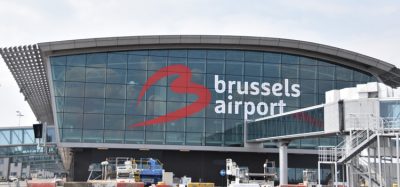Performance based navigation and a harmonised sky
Posted: 10 June 2011 | Steve Fulton, Technical Fellow at GE Aviation | No comments yet
Air traffic is expected to nearly double during the next two decades, raising public concern over not only the environmental impact but also how airspace capacity around airports will need to increase. This latter aspect also raises concerns over increased noise pollution and emissions around airports. In addition, industry has its concerns too – in that current ATC systems will not be able to accommodate the projected increase in air traffic.
Thankfully, all of the above issues are being addressed by two programmes that are in the process of revamping ATM (or ‘modernising the skies’). These programmes are, in the U.S., the FAA’s Next Generation (NextGen) Air Transport System and, in Europe, the Single European Sky ATM Research (SESAR) programme.
Air traffic is expected to nearly double during the next two decades, raising public concern over not only the environmental impact but also how airspace capacity around airports will need to increase. This latter aspect also raises concerns over increased noise pollution and emissions around airports. In addition, industry has its concerns too – in that current ATC systems will not be able to accommodate the projected increase in air traffic.
Thankfully, all of the above issues are being addressed by two programmes that are in the process of revamping ATM (or ‘modernising the skies’). These programmes are, in the U.S., the FAA’s Next Generation (NextGen) Air Transport System and, in Europe, the Single European Sky ATM Research (SESAR) programme.
NextGen & SESAR
The FAA’s NextGen is an umbrella term for the transformation of the USA’s National Airspace System (NAS). It includes a shift from a groundbased system of ATC to a satellite-based system of ATM. This shift is made possible through the deployment of aviation-specific applications for existing, widely-used technologies (such as GPS) and the latest innovations in areas such as weather forecasting, data networking and digital communications.
Join our free webinar: Revolutionising India’s travel experience through the Digi Yatra biometric programme.
Air travel is booming, and airports worldwide need to move passengers faster and more efficiently. Join the Digi Yatra Foundation and IDEMIA to discover how this groundbreaking initiative has already enabled over 60 million seamless domestic journeys using biometric identity management.
Date: 16 Dec | Time: 09:00 GMT
rEGISTER NOW TO SECURE YOUR SPOT
Can’t attend live? No worries – register to receive the recording post-event.
In Europe, the SESAR programme – cited as one of the most ambitious research and development projects ever launched by the European Community (EC) – has similar goals and plans for achieving them to provide a Single European Sky.
In some respects SESAR’s challenges are a little greater than NextGen’s as the formation of a single ‘European sky’ clearly requires collaboration between several countries, each with its own airspace administrator. However, progress is being made, and at a pace. In March of this year, at the ATC Global exhibition in Amsterdam, the SESAR Joint Undertaking (JU) presented the first components of its future European ATM system.
These components include a number of validation exercises that will cover: efficient and green terminal airspace operations; end-to-end traffic synchronisation, and integrated and collaborative network management.
Improving performance
A fundamental aspect of the modernisation of airspace is a move toward Performance-based Navigation (PBN); a broad term used to describe a number of technologies (with varying levels of benefit) that allow aircraft to fly more flexible and accurate three-dimensional flight paths.
By making greater use of equipment onboard large commercial aircraft, most notably the Flight Management System (FMS), PBN technologies free aircraft from their reliance on fixed, ground-based radio-navigation aids.
For example, one form of PBN is Area Navigation (RNAV). On-board equipment calculates direct navigation paths between points without the aircraft having to overfly intermediate, ground-based navigation aids. While RNAV paths are typically limited to straight lines, they represent an improvement over conventional, ground-based navigation.
Another form of PBN is Required Navigation Performance (RNP) in which the aircraft’s onboard navigation system provides performance monitoring and alerting, allowing the aircraft to fly precise, three-dimensional trajectories. There are different types of RNP and one of the simplest (known as RNP APCH) provides instrument approaches to runways that do not currently have adequate ground-based navigation facilities. Or they can be used to back up existing ground-based navigation procedures.
The highest performing type of PBN is the RNP AR (also known as RNP SAAAR, which stands for Special Aircraft and Aircrew Authorisation Required). An RNP AR path is typically crafted to reduce track miles, conserve fuel, preserve the environment, and increase airspace capacity.
RNP AR procedures require specific aircraft functionality and pilot crew training in order to be used. They are extremely accurate though. For example, in a trial in Brisbane Australia, aircraft flying optimised RNP AR paths demonstrated that they can adhere to a lateral path of plus or minus 70 feet; i.e. less than the wingspan of most aircraft.
This kind of navigation accuracy and performance will, ultimately, allow air traffic controllers to safely reduce spacing between aircraft and will help reduce air traffic congestion and delays. In addition, because RNP delivers precise, yet flexible guidance to a runway, independent of ground-based navigation systems (such as ILS) operation airport operation becomes almost ‘all weather’.
In fact, RNP’s complete independence of ILS was demonstrated clearly late last year when RNP flight paths at Lijiang, China, prepared by GE Aviation’s PBN Services enabled Sichuan Airlines and Air China to maintain reliable commercial air service at the airport during an ILS outage. Were it not for the RNP paths, the loss of the ILS would have prevented aircraft from landing at Lijiang during periods of low visibility and when the cloud ceiling was below 1,200 feet.
Decisions ahead
One result of RNP implementation is that the approach path flown by aircraft will need to change in order to improve efficiency and environmental performance. In the U.S. to date, many of the new RNP procedures deployed have been ‘overlays’ of existing ILS approaches, including the long, straight final approach segments that characterise those procedures. But these overlays, or ‘mirrored approaches’, don’t access the full potential of RNP to reduce emissions and noise while improving airport efficiency.
RNP is not limited to straight-line paths, and many of RNP’s benefits derive from the ability to design curving paths along a shorter route or to tailor the path to overfly less noisesensitive areas, such as motorways, rivers and industrial areas.
This is in sharp contrast to the traditional way of managing air traffic, which is through instrument arrival procedures under which airplanes are vectored by ATC through a series of straight-line, vertical step-downs. Much of the step-down approach is conducted at suboptimal altitudes, with flaps extended and engines revving to overcome aerodynamic drag. As such, noise is exacerbated by the required engine thrust and also greater aerodynamic noise from the airframe.
Also worthy of note is that the afore – mentioned trials in Brisbane results were conducted in a mixed equipage traffic environment. Air traffic controllers were able to clear an RNP-capable Qantas fleet for the optimized RNP procedures without disrupting traffic flying the older, conventional instrument procedures. In other words, the experience in Brisbane shows that it is possible to derive benefit from RNP today, without having to wait for 100% participation.
Airports have a role to play
In summary, an RNP procedure is a clearly defined path through three-dimensional space. The successful deployment of PBN procedures though involves complex airspace integration with careful consideration of all stakeholders, including ATM organisations, operators, regulatory authorities, airports and communities.
Regarding the last of these, airport managers know their communities better than anyone. Once they have become familiar with RNP, and what it has to offer, they can work with the communities they serve, the aviation authorities and third-party RNP procedure designers.
Regarding the third-parties, in the past, public-use, instrument flight procedures in the U.S. (for example) were designed and deployed exclusively by the FAA. Today, with an increasing demand for more efficient, environmentally sensitive airspace procedures, the agency is straining to keep pace with the demands to build new paths while maintaining old ones. Fortunately, the FAA has authorised a few commercial third-parties, such as GE Aviation, to work with air traffic controllers, airports, airlines and communities to deploy public RNP paths in the U.S.
Indeed, GE’s PBN Services group has designed and deployed 340 high-performance RNP procedures that are currently in active use in six other countries around the world, making it the largest and most experienced RNP services provider. And, as mentioned, RNP flight paths can provide immediate benefits and be introduced into a mixed-equipage environment.
RNP in action
In Brisbane, Australia, a medium-density international airport, new RNP flight paths enabled the Qantas fleet of 737s to significantly reduce noise impact on the community by altering the course of the aircraft so they overflew rivers and industrialised areas of town, away from more densely populated residential areas. The procedures also reduce carbon dioxide emissions by an estimated 1.1 million kilograms during the first 18 months of operations, according to Airservices Australia, the air navigation service provider there.
Optimisation on the ground
The revamping of ATM will enable fundamental improvements to airport infrastructure and procedures to be made. For example, under current ATM practices a destination ATC has only an approximate idea of any aircraft’s ETA. The coincidental arrival of expected and delayed flights results in a peak throughput of passengers; and many ground-based activities (such as baggage handling) therefore tend to be ‘sized’ to cope accordingly.
Under the revamped ATM, arrival time conflicts can be detected much earlier, and aircraft can be issued (at any point of their flight) with a Required Time of Arrival (RTA).
Rising to the challenge
In recent news, a Brazilian airline has selected GE Aviation’s PBN Services to assist them in obtaining regulatory authorisation to fly RNP flight procedures in Brazil. Once approved, the airline will be allowed to fly RNP paths in its fleet of Boeing 737s, reducing fuel consumption and emissions while increasing airspace capacity.
One pressing reason for the switch to RNPs is that Brazil’s air traffic is expected to double, from its current four million passengers per month to eight million by 2014; according to a 2009 KPMG estimate, UK trade commission report. The country is hosting the World Cup in 2014 and the Olympics in 2016, which could place major challenges on Brazil’s capacitylimited air traffic management system.
Where, when and why?
While in the U.S. and Europe, legacy navigation architecture presents some challenges to the unfettered deployment of PBN, nations that are currently building new navigation infrastructure or rapidly expanding an existing one, have the advantage of starting with a clean sheet of paper.
Over the next few years, regions of the world such as China, India, Africa, South America and the Middle East, which anticipate rapid aviation growth, have the ability to deploy efficient, environmentally-sound PBN-based navigation architecture to accommodate that growth.
The roll-out of PBN and associated construction of RNP paths, in these areas can in theory be much easier and quicker than is the case in regions where a mature, legacy navigation infrastructure is already in place. Moreover, RNP’s flexibility means it can be adapted as air traffic requirements change.
About the Authors
Steve Fulton is a Technical Fellow at GE Aviation and was the co-founder of Naverus, Inc. in 2003; the root of GE Aviation’s PBN Services. Prior to this, in his former capacity as technical pilot at Alaska Airlines, Mr. Fulton was instrumental in the development of the world’s first commercial RNP AR instrument approach procedure at Juneau, Alaska.
The International Airport Summit is open for registration!
Date: 19 – 20 November 2025
Location: JW Marriott Hotel Berlin
At our flagship event of the year, we will dive into the future of airport operations, with expert-led sessions on passenger experience, innovative smart technologies, baggage handling, airside operations, data, security, and sustainability.
This is where global airport leaders come together to share insights, challenges, and real-world solutions.
Limited complimentary passes are available for eligible professionals – first come, first served!

















